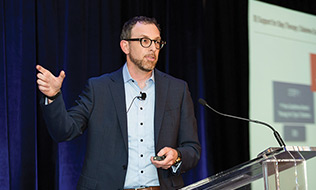

Amidst all of the innovation that’s occurring in the drug industry, pharmacists have a role to play in helping employers navigate the changes, a speaker told participants at the Healthy Outcomes conference in June.
“We can expect new medications to come onto the market in the next few years,” said Mark Rolnick, vice-president of payor partnerships and plan sponsor innovation at Shoppers Drug Mart.
“As a result, employers and insurers can expect to see drug costs rising again, especially for specialty drugs. In fact, specialty drug costs are expected to rise 600 per cent from 2010 to 2020.”
Read: Healthy Outcomes: Linking drug plans to employee health
But the cost of new and specialty drugs is just part of the picture, he added. What’s also of concern are the rising rates of chronic disease and mental illness that are driving up drug utilization, absenteeism and short- and long-term disability claims.
Despite the various plan management options available to organizations and insurers, costs continue to climb. Rolnick, however, noted the expanding role of pharmacists is another way to help reduce costs.
“The care and case management patients receive in specialty networks, combined with pharmacy patient support programs, help ensure the best outcomes possible while maximizing drug cost dollars,” he said.
Rolnick noted the scope of pharmacists is increasing across the country. Pharmacists now administer flu shots and shingles vaccinations, renew prescriptions and provide information. In Alberta they can perform point-of-care testing for possible strep throat. The Canadian Pharmacists Association suggests that, over a 30-year period, the expanded role will result in 130,000 fewer strokes; 260,000 fewer myocardial infarctions; 76,000 fewer cases of angina; and 70,000 fewer cases of heart failure.
“I believe there are many other ways for pharmacists to partner in health care,” said Rolnick. “We need to find better ways to collaborate and invest in solutions.”
Read more coverage from the 2017 Healthy Outcomes conference
